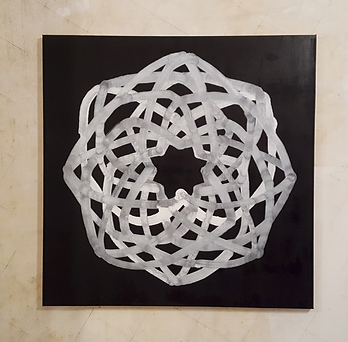Marie Cloquet
TRAVELING LIGHT
08/09/2019 - 20/10/2019
Marc Rossignol
Synchrone
Opening Sunday 9 September 2018
Marc Rossignol
Synchrone
Opening Sunday 9 September 2018
Marc Rossignol
Synchrone
Opening Sunday 9 September 2018
Marc Rossignol
Synchrone
Opening Sunday 9 September 2018
Herman Van Ingelgem
Foreign Bodies & Protheses
06/09/2021 - 17/10/2021
Philip Van Isacker, 1949, Mechelen
Lives and works in Ghent.
Philip Van Isacker studied law and art history at Ghent University before becoming a visual artist. At the start of his artistic career, Van Isacker predominately created paintings, but he soon developed into a sculptor and exhibited his first sculptural work in the 1980s. His sculptures, which hover between abstraction and figuration, are typical of a minimalism that contains postmodern influences and flows from a conceptual thought process. Classical sculpture and its legacy forms the basis of his artistic practice. Whilst his early oeuvre is characterised by geometric structure, his more recent work is generally defined by organic forms and human figures.
Van Isacker chiefly creates his sculptures from clay, marble and metal. Moreover, it is striking that he opts for transient materials that are at risk from the elements. As a result, his sculptures seem to evoke the passage of time and the ephemerality of life. Van Isacker defines his works, which are in a permanent state of incompletion, as ‘monuments to the right to doubt’. The ephemeral or transient nature of the oeuvre leads to greater openness and a layered quality. Multiple interpretations are possible and we can complete the work for ourselves.
Van Isacker also rejects any kind of categorisation. With the series ‘Tekeningen en sculpturen zonder eigenschappen’ [Drawings and sculptures without characteristics] he seems to be emphasising that his work is self-creating and thus not obliged to comply with certain predetermined characteristics. The human body is a crucial theme in Van Isacker’s artistic practice. Initially he presented it in a fragmented way, with a torso or a head resting on a plinth. Gradually, limbs made way for the entire physical form, which he presented with or without a base.
Aside from the figure, in the 1990s Van Isacker produced a series of sculptures centred on the sculpting technique of draping in order to explore the notion of movement as an autonomous entity. From the 2000s, he integrated video art into his artistic practice, and moving images regularly featured in his sculptural installations from then on. One example is ‘Within The Movement Of Time / The Juggler’ (2009), a work which unites video and existing, autonomous artworks to create an overarching picture.
In addition to traditional art institutions, Philip Van Isacker’s sculptures can also be seen in the public or semi-public space. His first site-specific work was made in Ghent. During the group exhibition ‘Chambres d’Amis’, which Jan Hoet curated in 1986, Van Isacker presented four sculptural works in clay and steel that changed continuously as a result of their exposure to the natural elements. After ‘Chambres d’Amis’, Van Isacker installed further work in the public space, including in Knokke, Mechelen, Antwerp and The Hague. Van Isacker believes that art must be accessible. As he says himself, he wants “art to be more comprehensible to people, art must go beyond a certain elite. That has nothing to do with the figurative or the abstract.”
One of his most discussed sculptures in the public space is ‘De jongleur of De man die zijn evenwicht zoekt’ [The juggler or The man searching for his balance] (2005) in Eeklo. It belongs to the series ‘The Juggling Man’ and is based on the eponymous sculpture by the Dutch sculptor Adriaen De Vries, whose work crossed the boundary into the Baroque, which in turn was inspired by a Hellenic sculpture that is said to have been restored by Michelangelo. Van Isacker’s juggler enjoys multiple interpretations, ranging from a portrait of the artist entertaining the viewer, to a representation of the questing man.
Van Isacker taught sculpture at Sint-Lukas in Ghent from 1993 to 2014 and was attached to Ghent University’s Architecture and Urban Planning department. As well as being a sculptor and tutor, Van Isacker is also an art historian, or an artist who writes. He regularly publishes books, most recently ‘De Sculptura: Over de beeldhouwkunst’ [On Sculpture] in 2021. In his writing, Van Isacker analyses sculpture by means of case studies that are significant to the history of the medium.
Text: SMAK, Ghent
.png)
.png)


%20(2019)_JPG.jpg)